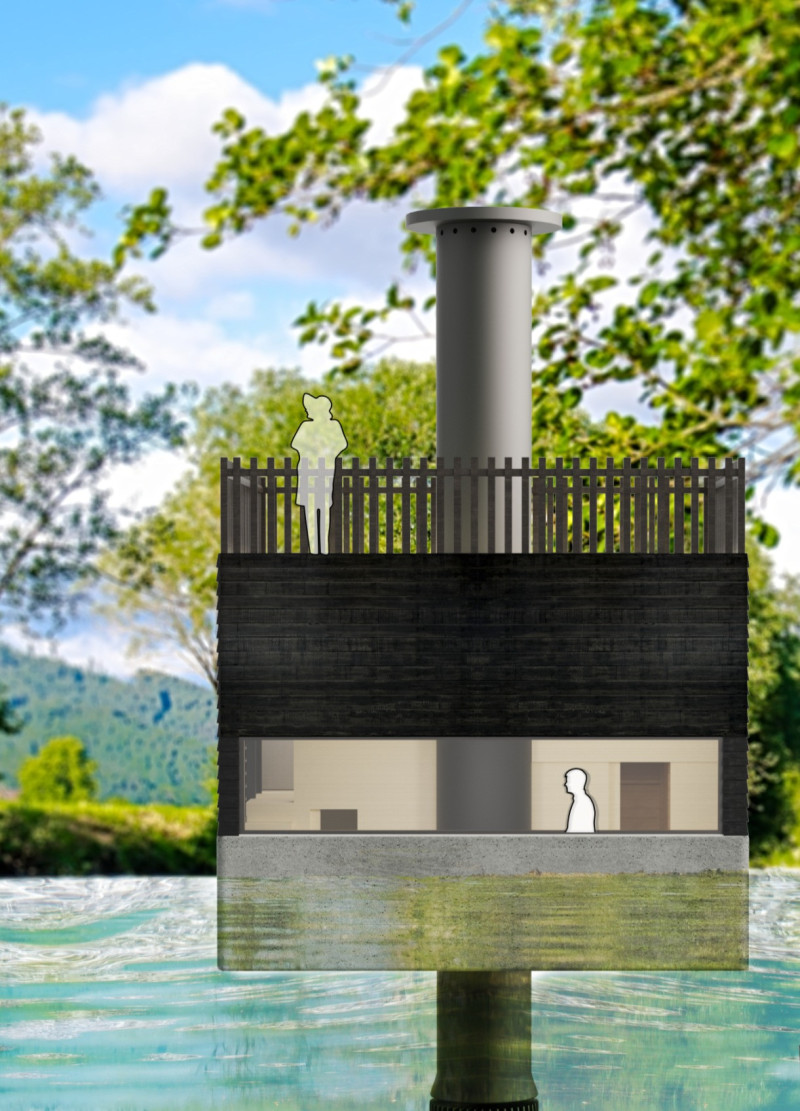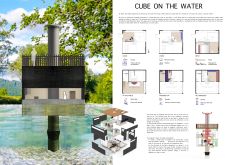5 key facts about this project
Structural Integrity and Material Choices
One of the key aspects of this project is its robust structural integrity. The foundation employs a combination of concrete and steel, ensuring buoyancy and stability. The use of burnt wood, specifically Slow Slag Elm, in the upper portions not only enhances aesthetic value but also guarantees durability against moisture. The clear distinction between the heavy, grounded base and the lighter, wooden upper structure delineates functionality while accentuating environmental resilience. The incorporation of large windows facilitates ample natural light, allowing for panoramic views of the surrounding water landscape.
Innovative Design Strategies
What sets the "Cube on the Water" apart from conventional designs is its unique floating mechanism. This feature allows the structure to remain functional under changing water levels, addressing an increasingly relevant concern in architectural design today. The central pillar providing the floatation serves both structural and visual purposes. Furthermore, the strategic roof and deck area design promotes outdoor engagement, enhancing the livability of the space while remaining socially integrated within the community.
In addition to its unique floating capability, the project includes water management systems that harness natural energy sources. This approach not only maximizes efficiency but also aligns with modern sustainability goals. The design aspect that accommodates remote working and versatile communal spaces illustrates an innovative response to the evolving needs of contemporary living.
Architectural Functionality and Spatial Design
The interior layout of the "Cube on the Water" exemplifies an organized approach to space. Each area serves a distinct purpose, from efficient cooking and dining spaces to dedicated work and relaxation zones. The careful consideration of functionality invites residents to experience a seamless flow throughout the living environment.
The architectural plans include specific details that enhance usability, such as access to natural ventilation and light. This aspect plays a crucial role in both energy management and occupant comfort.
For more insights into the architectural plans, sections, and designs that make this project functional and sustainable, readers are encouraged to explore the presentation further. Understanding the architectural ideas behind the "Cube on the Water" will offer a comprehensive view of modern living solutions suited for our changing environment.























